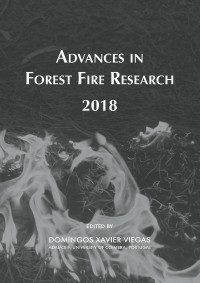Please use this identifier to cite or link to this item:
https://hdl.handle.net/10316.2/44651| DC Field | Value | Language |
|---|---|---|
| dc.contributor.author | Costa, Aline das Graças | |
| dc.contributor.author | Torres, Fillipe Tamiozzo Pereira | |
| dc.contributor.author | Lima, Gumercindo Souza | |
| dc.contributor.author | Silva Júnior, Milton Ribas da | |
| dc.contributor.author | Zanuncio, José Cola | |
| dc.date.accessioned | 2018-11-11T09:39:55Z | |
| dc.date.accessioned | 2020-09-06T17:30:48Z | - |
| dc.date.available | 2018-11-11T09:39:55Z | |
| dc.date.available | 2020-09-06T17:30:48Z | - |
| dc.date.issued | 2018 | - |
| dc.identifier.isbn | 978-989-26-16-506 (PDF) | |
| dc.identifier.uri | https://hdl.handle.net/10316.2/44651 | - |
| dc.description.abstract | Forest fires represent the greatest threats to biodiversity in Conservation Units (UCs) in Brazil. Knowledge of the causes and regions with the highest occurrences allows the use of fire risk management. The objective of this study was to evaluate the causes of forest fires in the Federal Conservation Units of Brazil from 2006 to 2012 to help in the management of fire risks in Federal UCs of Brazil. The Registros de Ocorrências de Incêndios (ROIs) of the UCs were obtained from the database of the Sistema Nacional de Informações sobre o Fogo (SISFOGO) maintained by the Instituto Brasileiro do Meio Ambiente e dos Recursos Renováveis. The total number of records was 2259, of which 88.2% were identified and 11.8% were unidentified. The unrecorded data evidenced failures in the identification of the fire. Unknown causes accounted for 42.2% of the records, followed by burn for cleaning (26.7%) and incendiarys (18.5%). The "rays" (natural causes) had low representativity (2.8%). Minas Gerais, Rio de Janeiro, Ceará, Bahia and Piauí were the states with the highest occurrences with 19.8, 15.5, 12, 9.6 and 7.4%, respectively, of the records for Brazil. UCs suffer burnings for pasture clearance in neighboring areas that reach these protected areas as well as on purposeful fires. The largest fire registry was in Minas Gerais, due to favorable conditions for fire and the prolonged season of drought in this state. Failures in the record of occurrence of fires and in the identification of their causes justify the great number of unknown causes. Fires recorded without identifying the causes and/or registered as unknown causes represent a failure to use the ROI tool by the UC and in the fire identification skill, making it difficult to make decisions against fire. The causes "unknown", "burn for cleaning" and "incendiaries" represent the group of major causes of fires. | eng |
| dc.language.iso | eng | - |
| dc.publisher | Imprensa da Universidade de Coimbra | por |
| dc.relation.ispartof | http://hdl.handle.net/10316.2/44517 | por |
| dc.rights | open access | - |
| dc.subject | protected areas | eng |
| dc.subject | fire | eng |
| dc.subject | fire registry | eng |
| dc.subject | fire prevention | eng |
| dc.title | Causes of forest fires in Federal Conservation Units of Brazil from 2006 to 2012 | por |
| dc.type | bookPart | por |
| uc.publication.firstPage | 1189 | - |
| uc.publication.lastPage | 1192 | - |
| uc.publication.location | Coimbra | por |
| dc.identifier.doi | 10.14195/978-989-26-16-506_134 | - |
| uc.publication.section | Chapter 7 - Short Contributions | por |
| uc.publication.digCollection | PB | por |
| uc.publication.orderno | 134 | - |
| uc.publication.area | Ciências da Engenharia e Tecnologias | por |
| uc.publication.bookTitle | Advances in forest fire research 2018 | - |
| uc.publication.manifest | https://dl.uc.pt/json/iiif/10316.2/44651/203743/manifest?manifest=/json/iiif/10316.2/44651/203743/manifest | - |
| uc.publication.thumbnail | https://dl.uc.pt/retrieve/11055599 | - |
| uc.publication.parentItemId | 55072 | - |
| uc.itemId | 68730 | - |
| item.grantfulltext | open | - |
| item.fulltext | With Fulltext | - |
| Appears in Collections: | Advances in forest fire research 2018 | |
Files in This Item:
| File | Description | Size | Format | |
|---|---|---|---|---|
| causes_of_forest_fires_in_federal_conservation_units.pdf | 548.09 kB | Adobe PDF |  |
Items in DSpace are protected by copyright, with all rights reserved, unless otherwise indicated.
